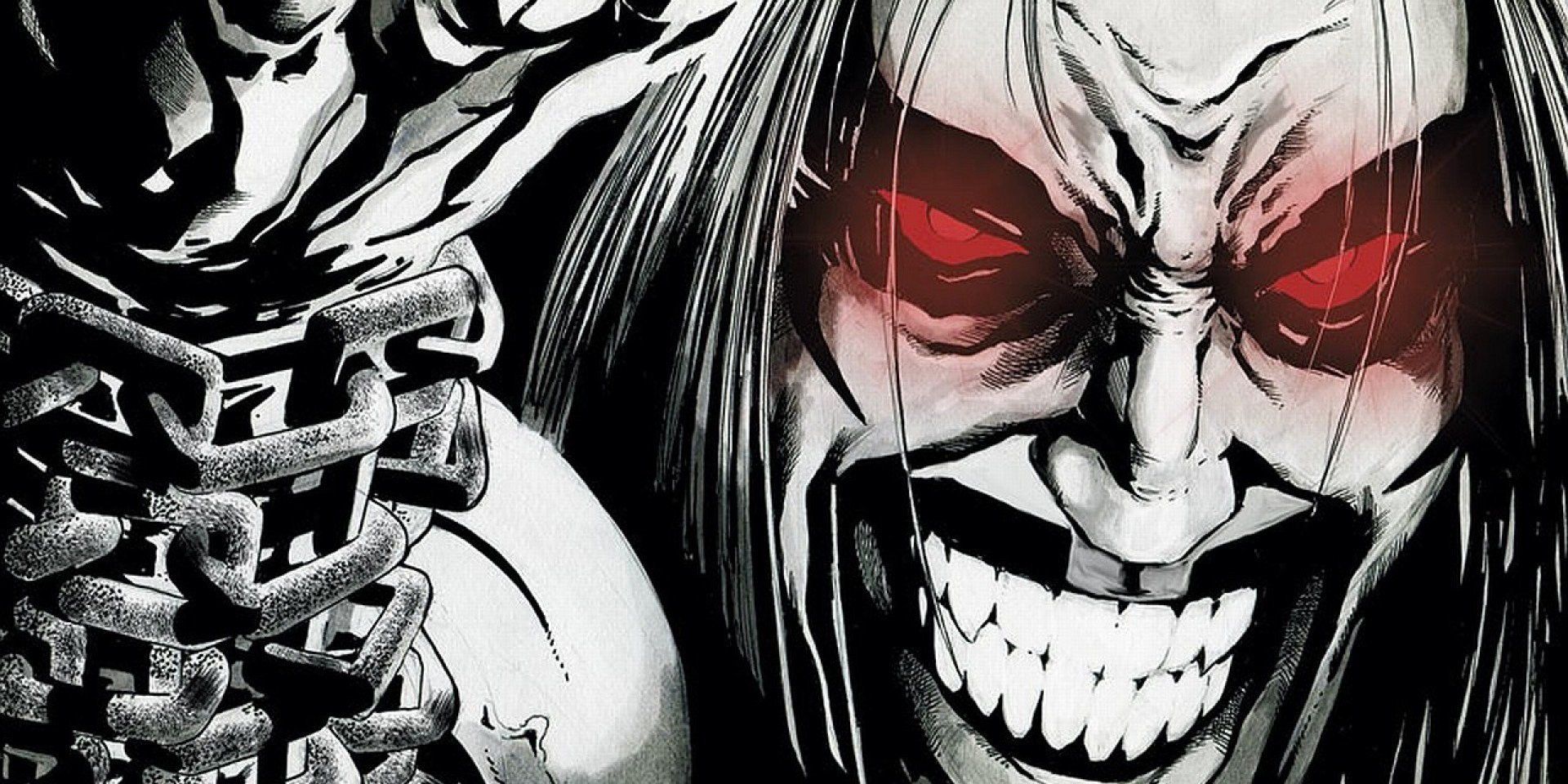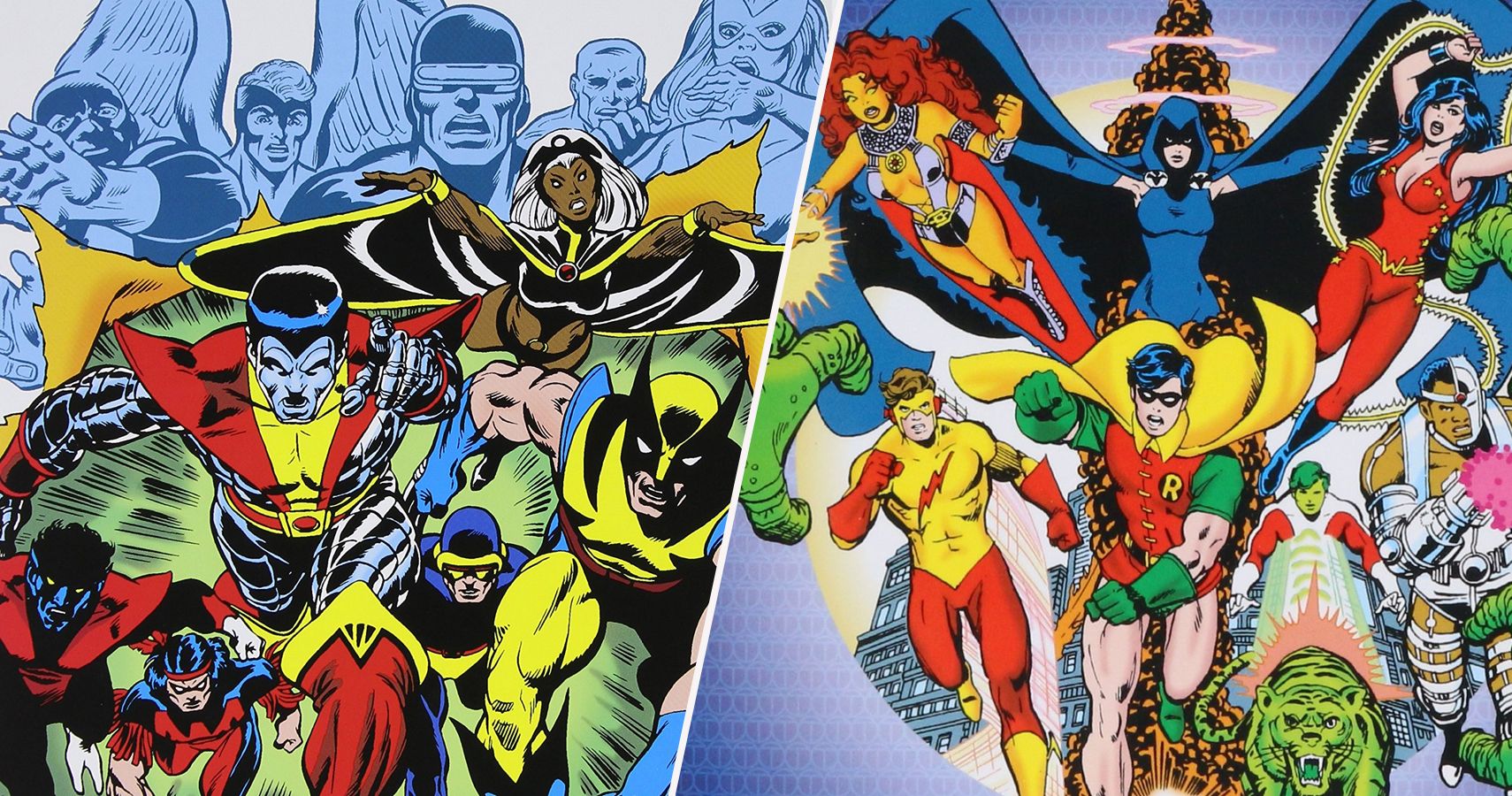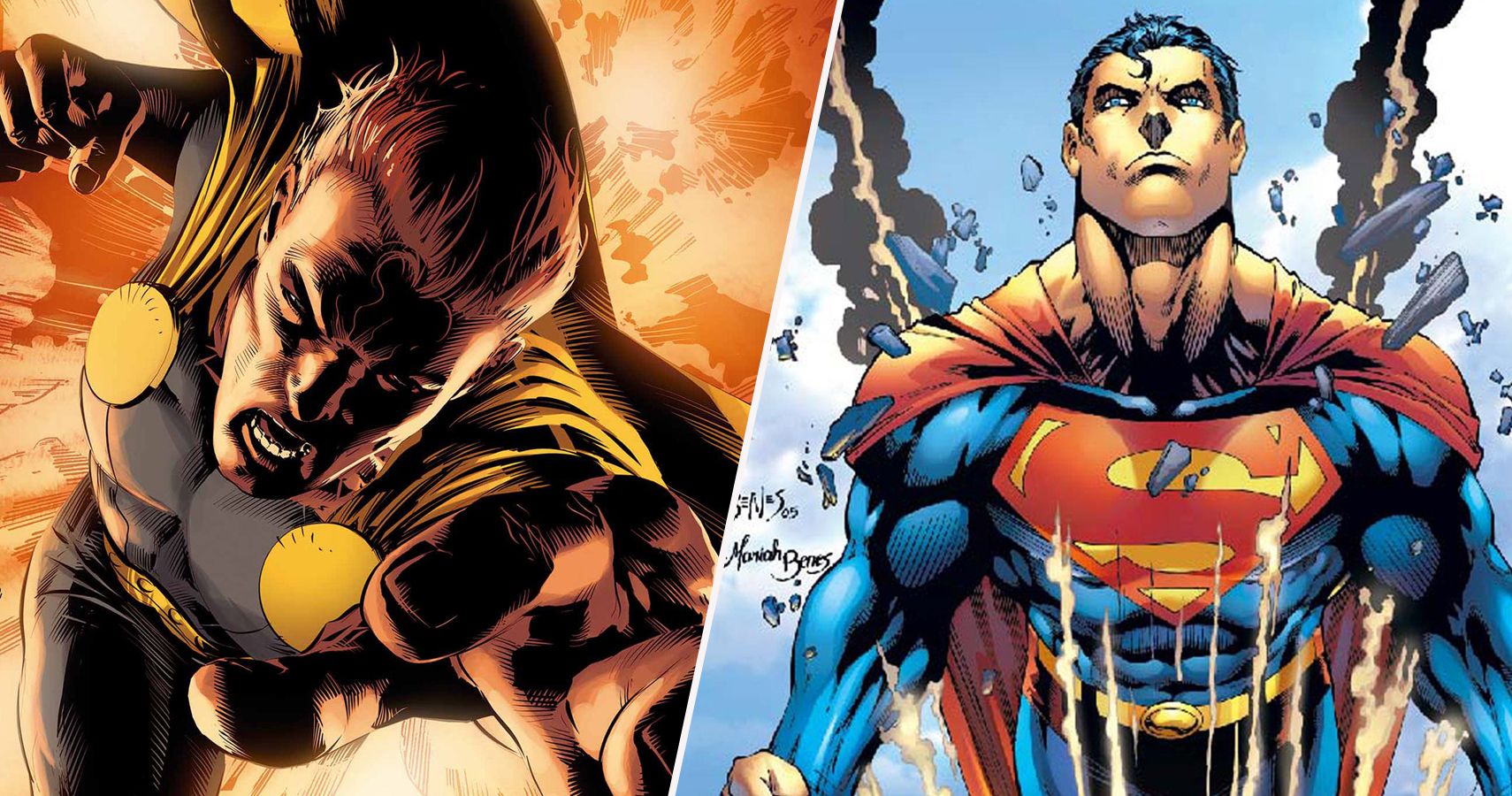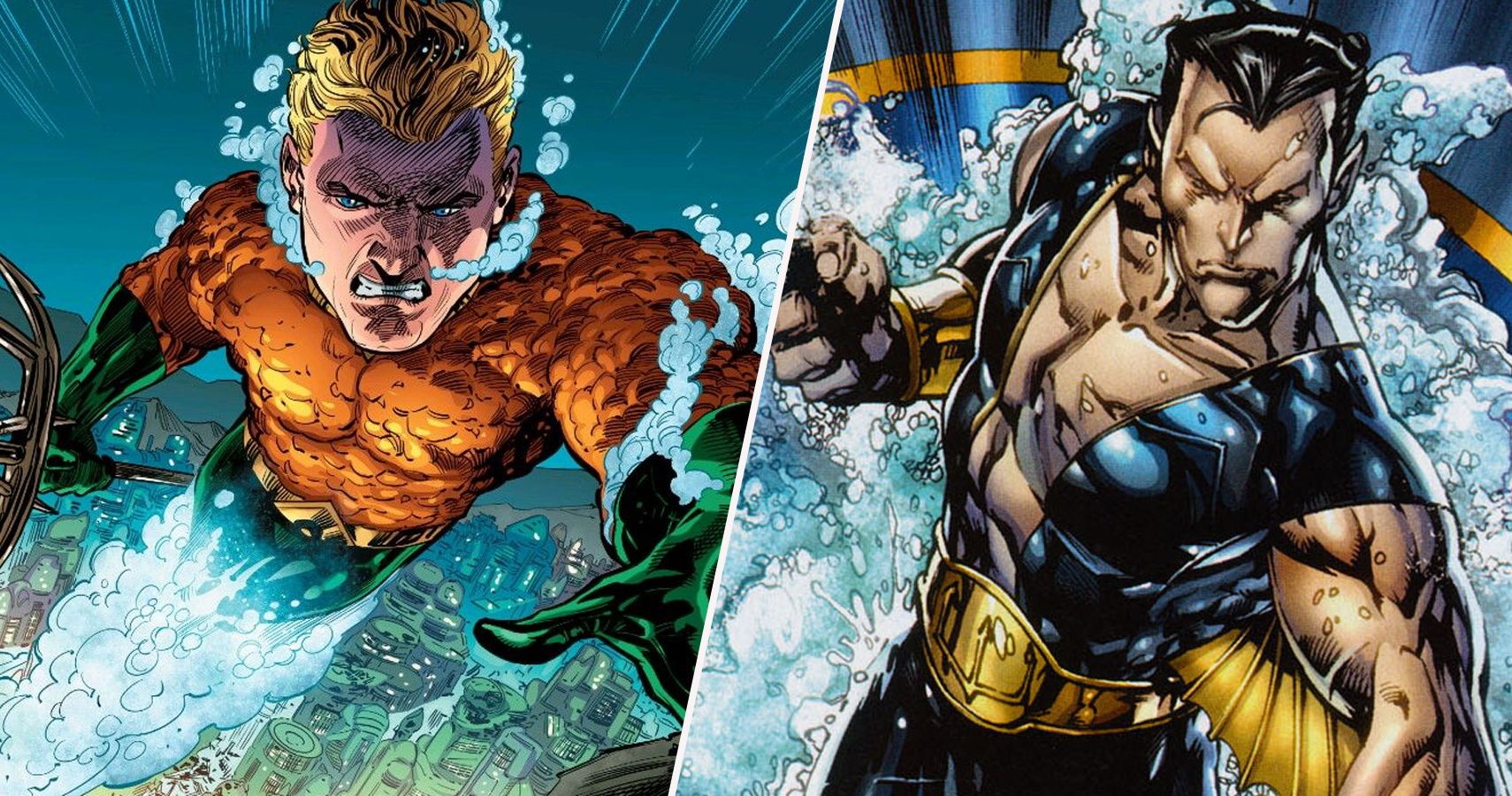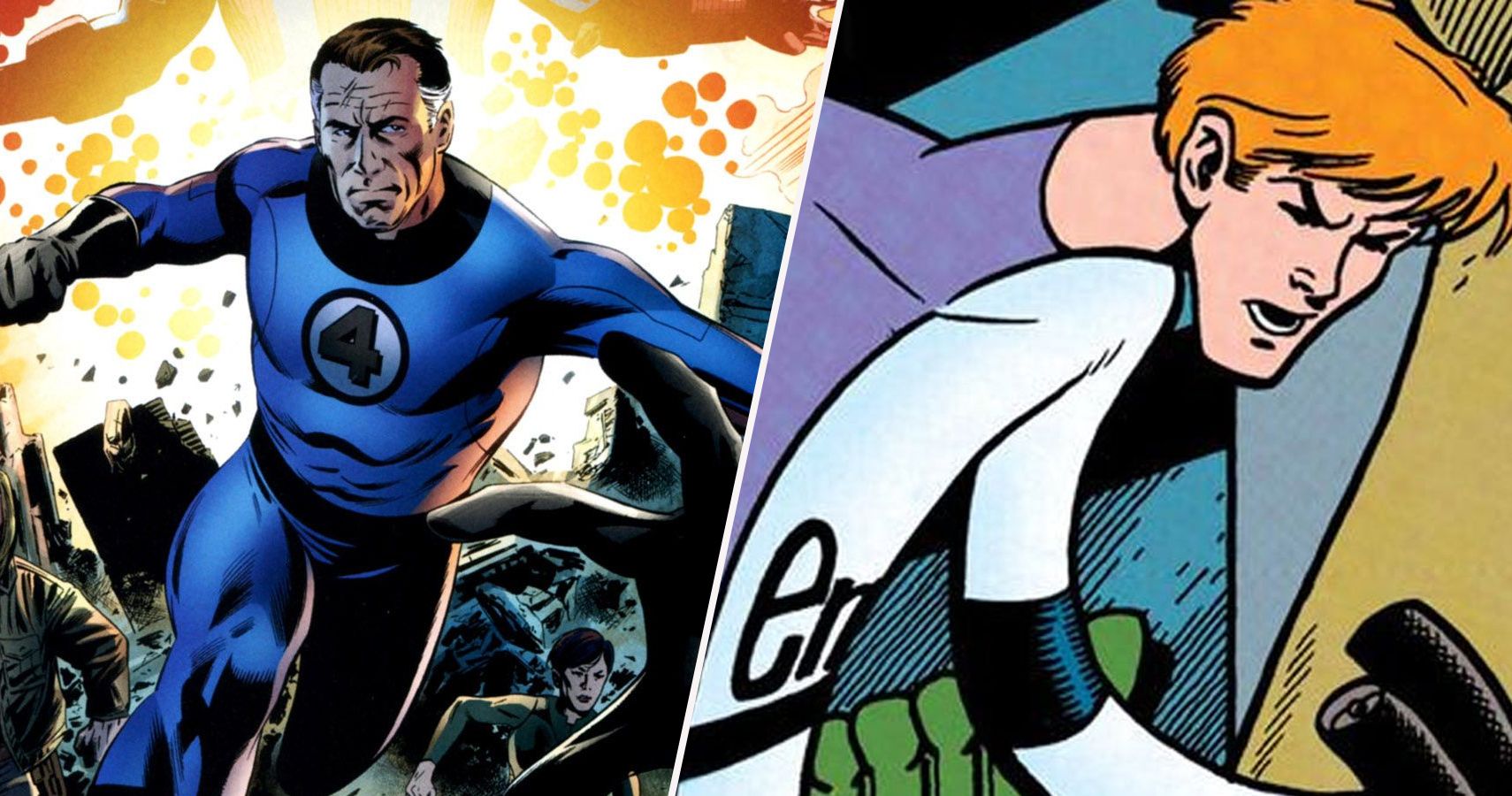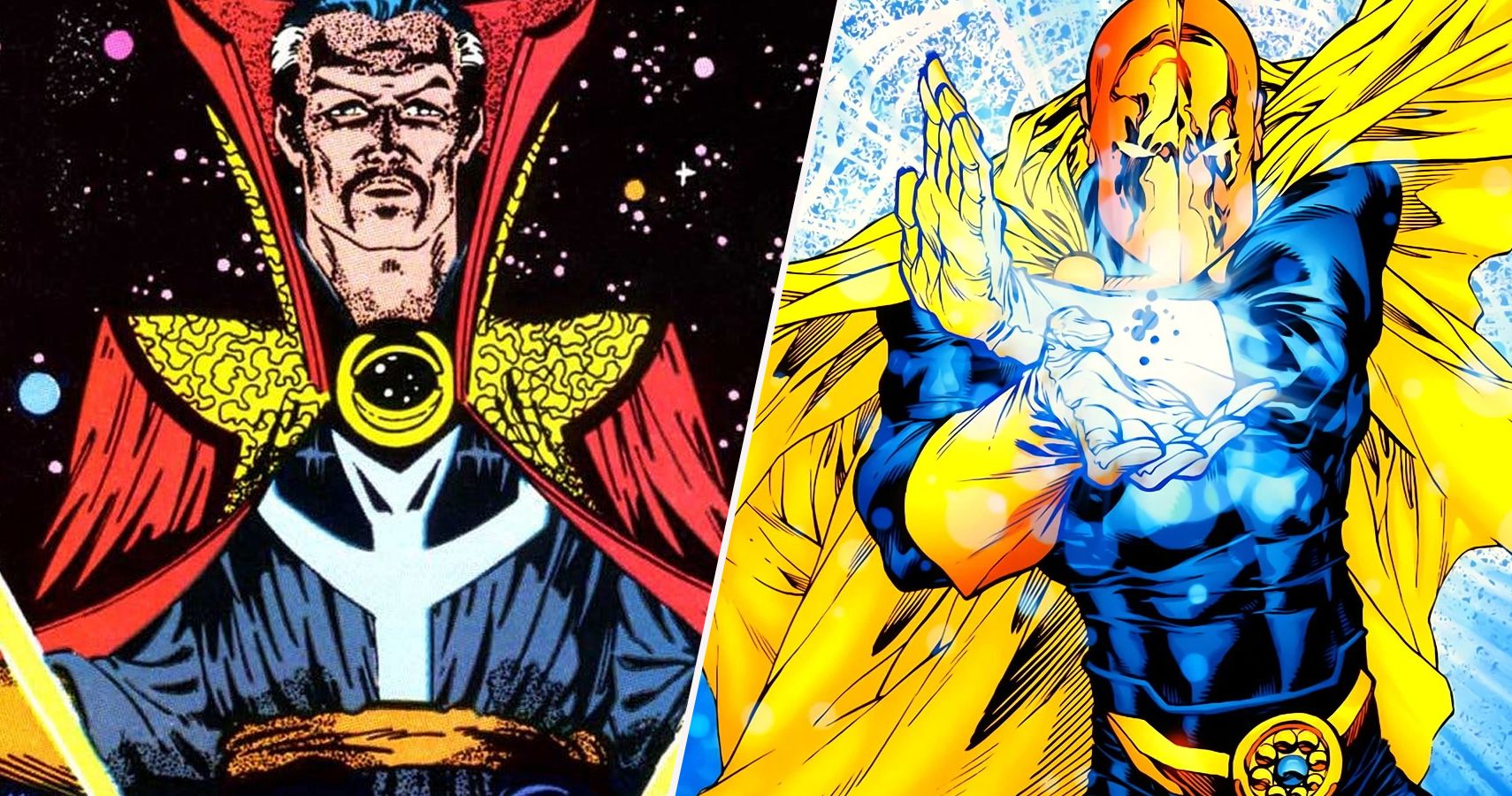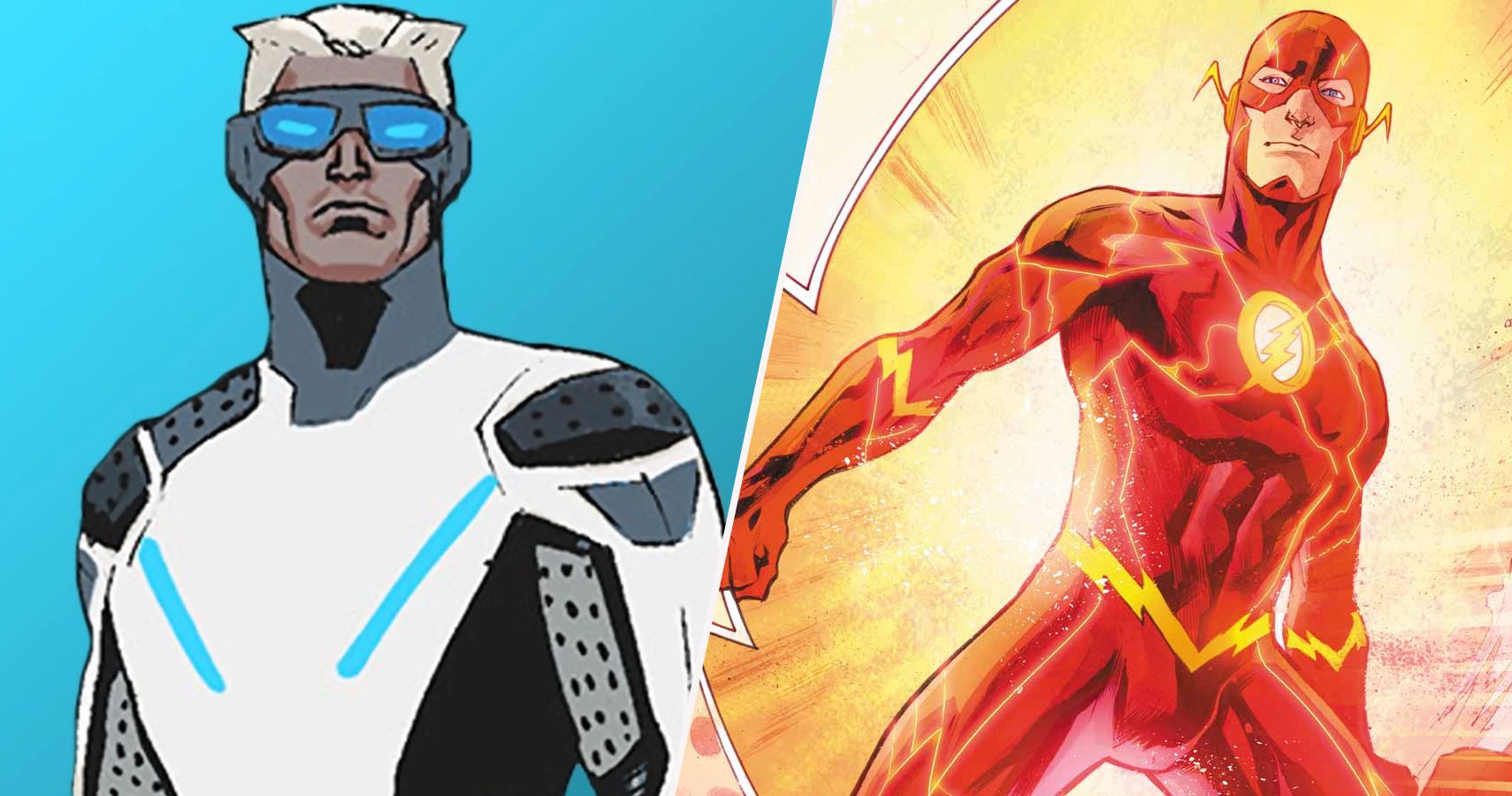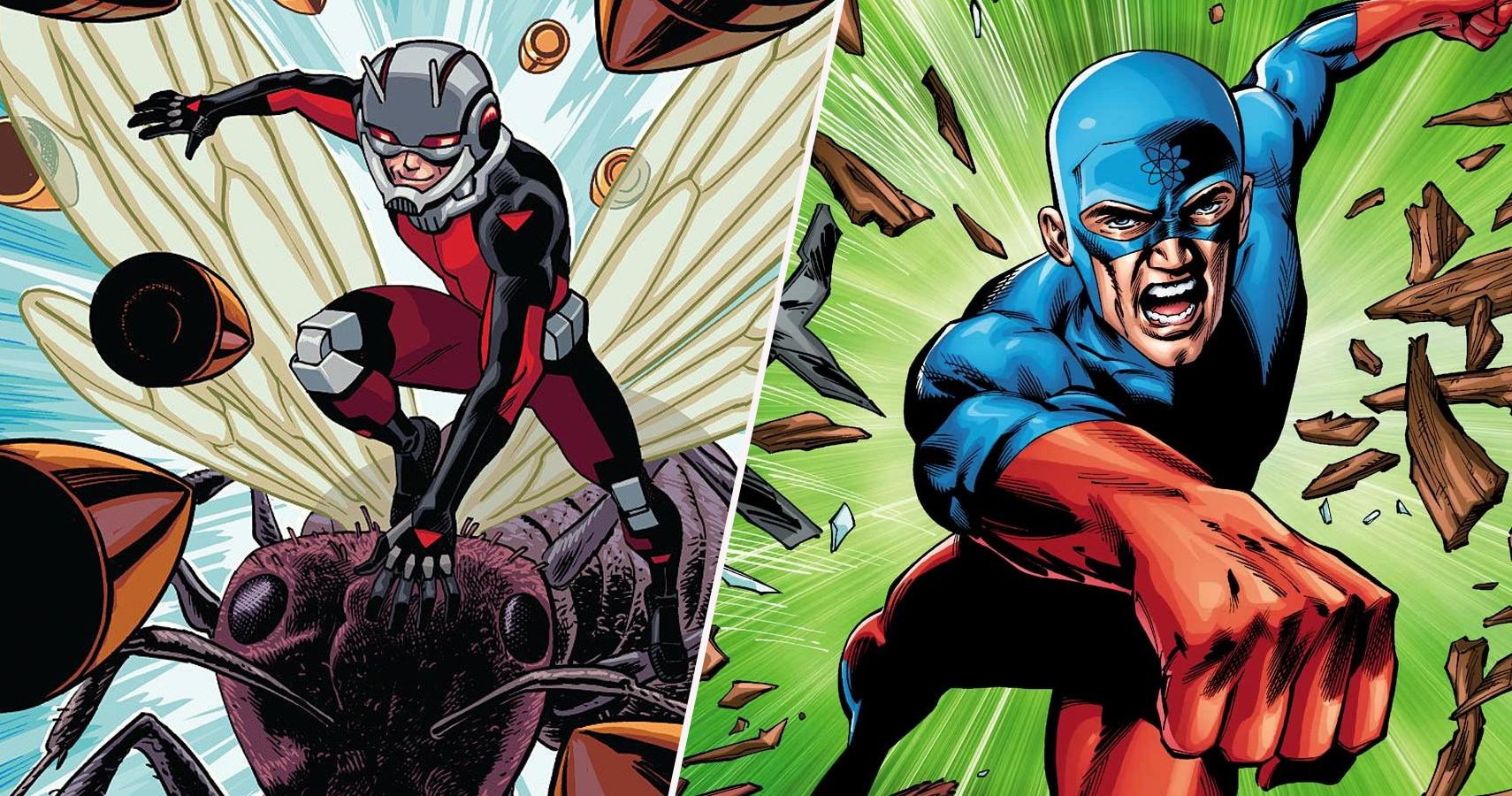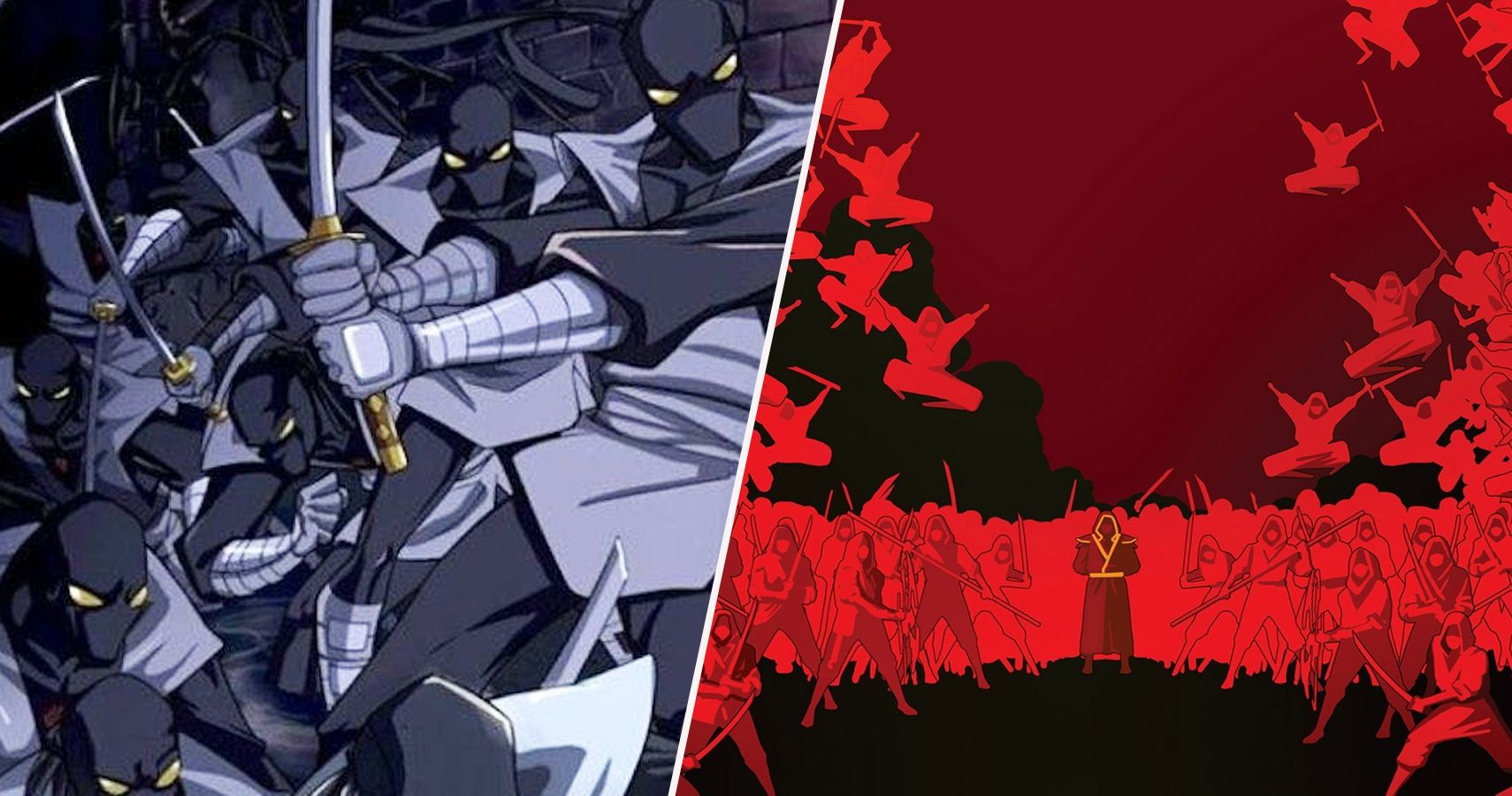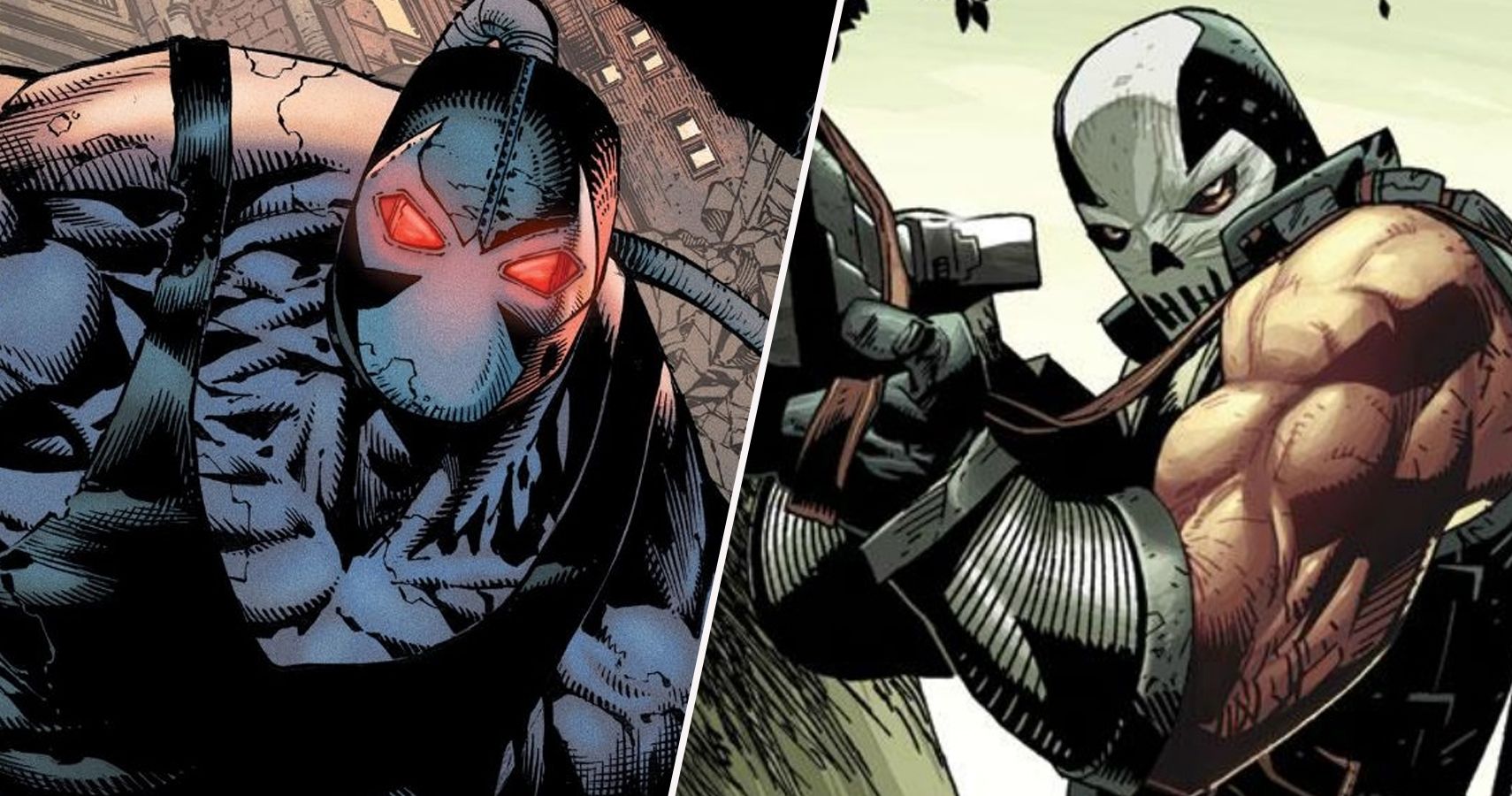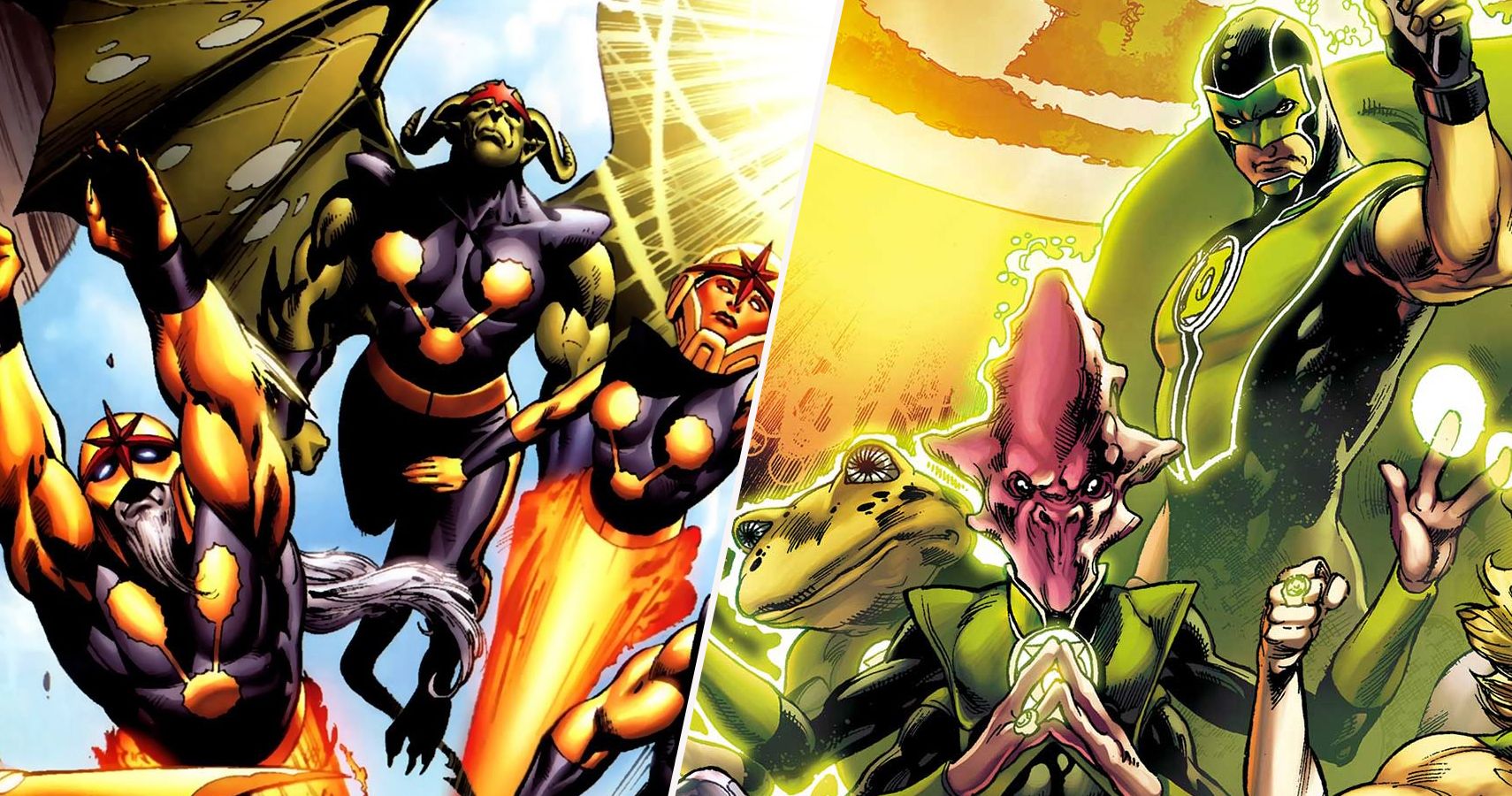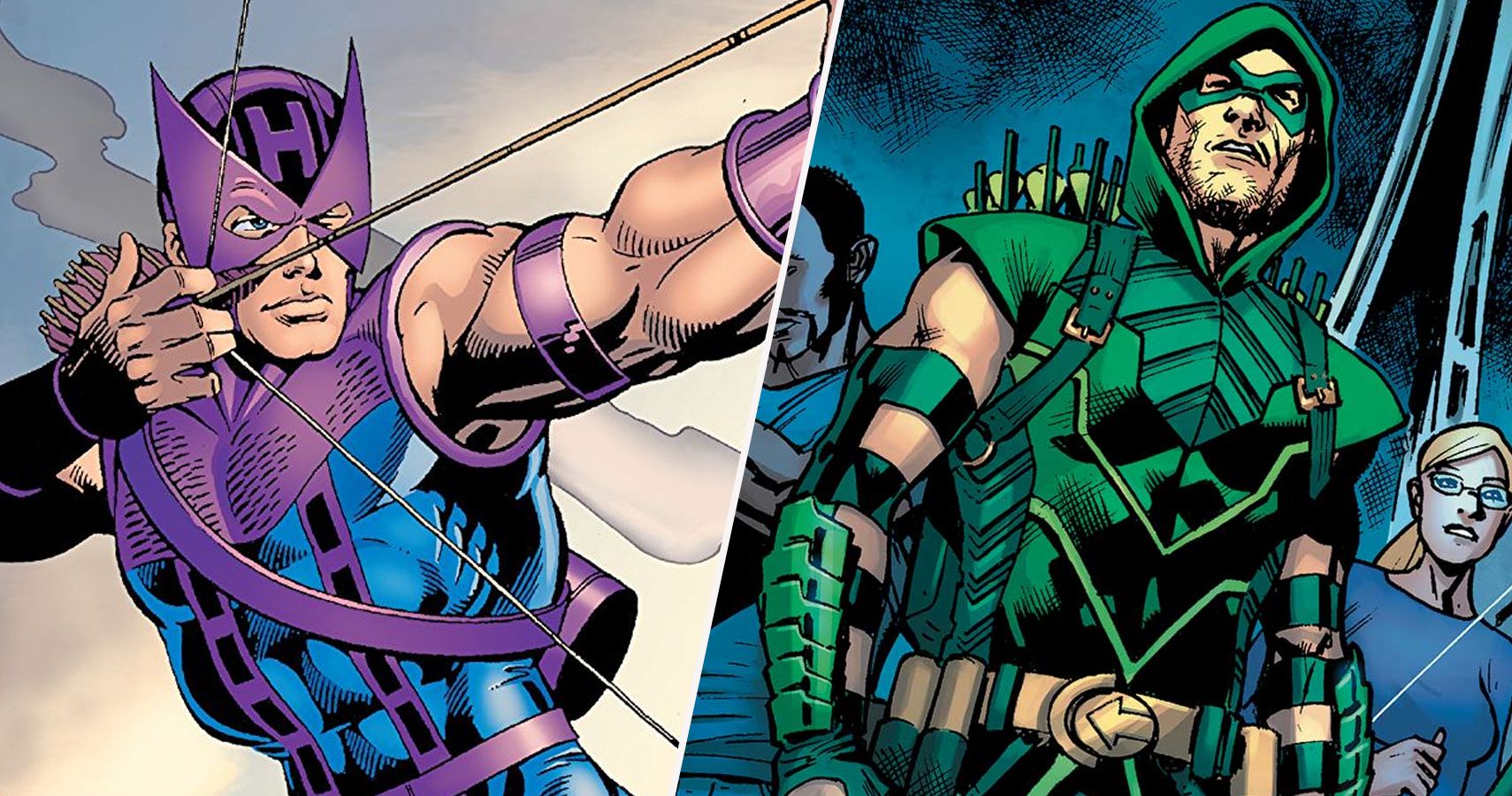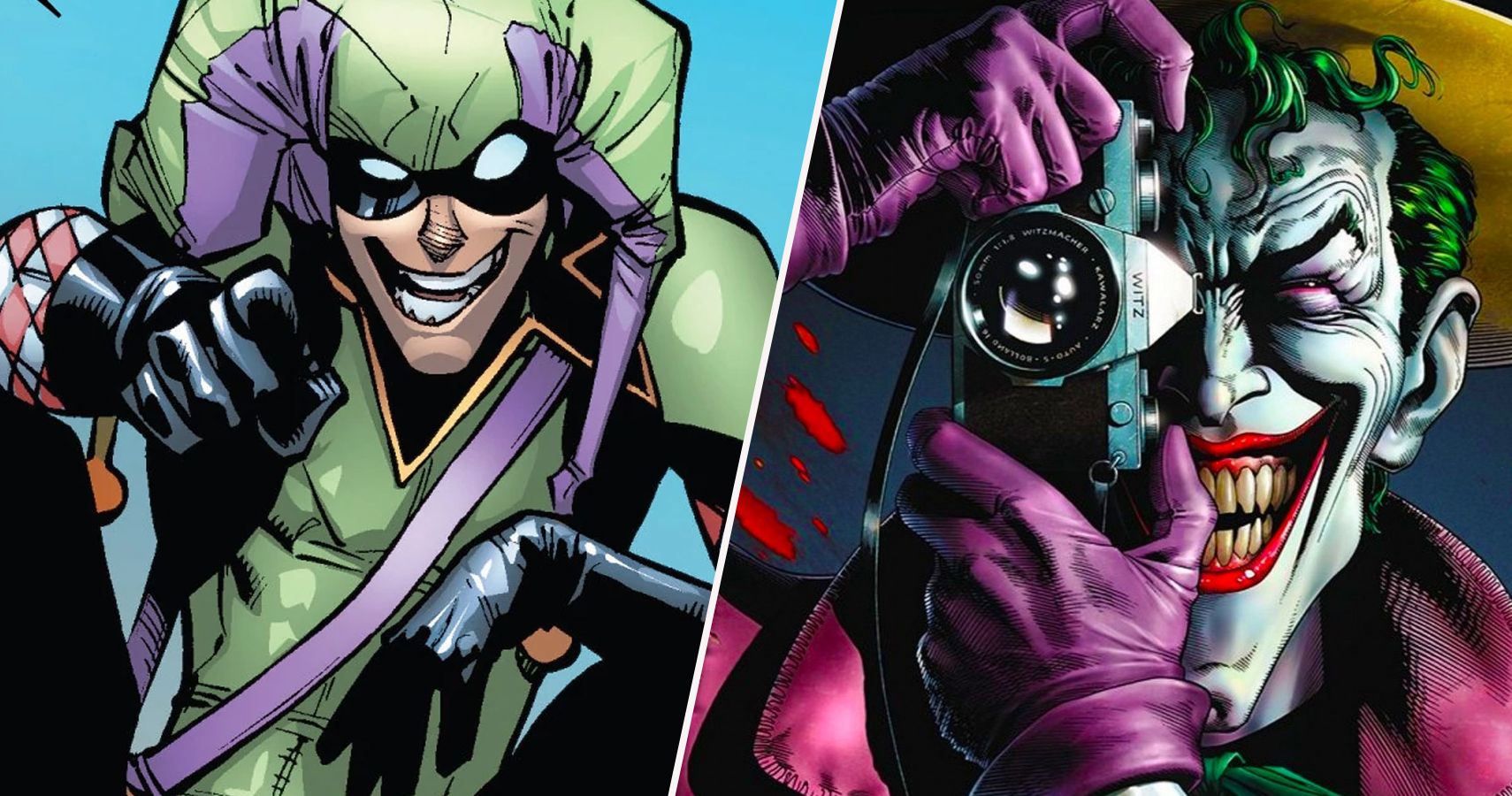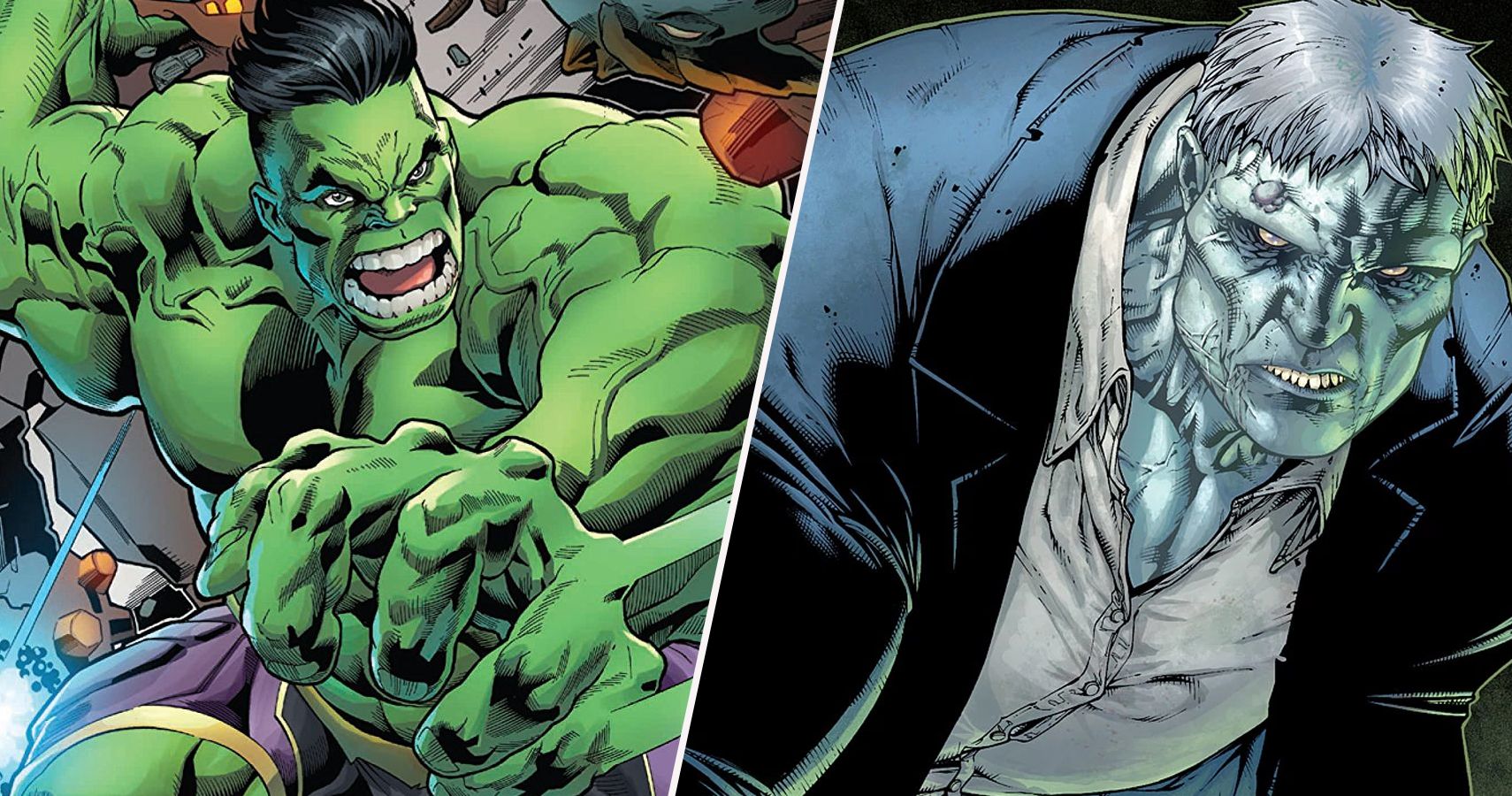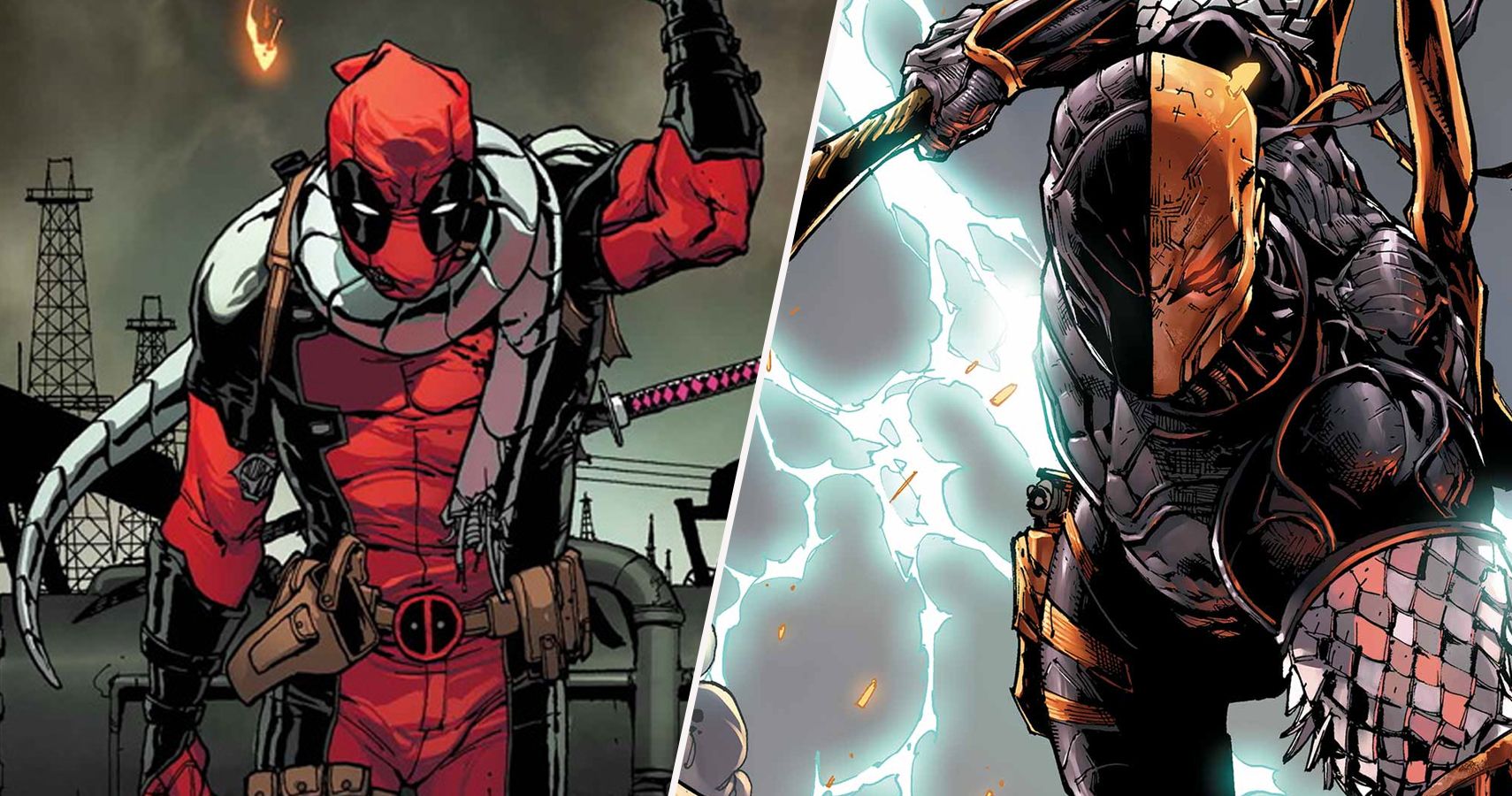Let's face it, there are a lot of derivative comic book characters, but that's not always a bad thing. In fact, some of our favorite characters seem to be little more than unabashed rip-offs of other characters. Creators improve upon the original and produce a character with more flair and greater appeal. A surprising amount of these characters are what many would assume to be entirely original -- they're the superheroes you think of when you think superhero. They get their own movie franchies and television shows -- never once hinting that they're little more than copies of an original, just with a little more spark to them. But we love them anyway. Why? Because they beat the original at their own game, fair and square.
Other rip-off characters that will never live up to the popularity of the original. Some of these characters are tremendous failures, falling embarassingly short of the mark set for them by their inspiration. Some come close, but just can't quite evoke the intangibles necessary for widespread name-recognition. In some cases, even multiple MCU appearances won't be enough for them to topple the original. Here are ten rip-off characters who became more popular than the original -- and ten who didn't.
20 MORE POPULAR: X-MEN
The X-Men made their debut in the September of 1963 in X-Men #1, written by Stan Lee and drawn by Jack Kirby -- only three months after the Doom Patrol debuted over in DC in My Greatest Adventure #80. The similarities between the two teams are undeniable. Both are teams of superpowered "freaks", despised by the public, and assembled by a wheelchair-bound leader. Sure, there are some key differences. For example, Chief, the mad scientist who assembled the Doom Patrol, masterminded the catastrophes that gave the members of the team their powers -- which is morally questionable, to say the least. Professor X was more of a straight-forward good-guy, offering to provide a group of young and confused mutants direction by forming the X-Men.
Needless to say, the X-Men are vastly more popular than the Doom Patrol. While the Doom Patrol has had its moments and has built a cult following along the way, the X-Men have constantly grown since their debut in the '60s. There've been countless X-Men-related comic book titles, and there've been eleven X-Men live-action films. Ask a random person on the street about these two teams, and there's a much greater probability that X-Men will ring a bell. Doom Patrol? Not so much.
19 LESS POPULAR: HYPERION
Hyperion is one of Marvel's latest attempts at creating their own version of DC's Superman. The modern version first appears in Avengers (Vol. 5) #1, written by Jonathan Hickman and drawn by Jerome Opena, Hyperion's powers and origin are very similar to those of Krypton's last son. Hyperion arrived on Earth as a baby as the last survivor of a race of Eternals. He grew up and joined the Squadron Supreme -- a team strikingly similar to the Justice League. However, again, Hyperion lost everything. This time his entire universe was destroyed, precipitating his arrival in the central Marvel universe, where he once again vowed to protect his new home from universal threats. In addition to his derivative origin, Hyperion has many of the same powers of Superman. Similar to how Superman gains power from the Earth's sun, Hyperion absorbs is empowered by cosmic radiation. This provides him with incredible levels of strength, speed, durability, and sensitivity.
Barring the extraordinary, we can't see Hyperion becoming more popular than Superman anytime remotely soon, if ever. Superman is arguably the most well-known comic-book character on the planet. As long as Superman comics are made, we can't see him ever being supplanted by whatever knockoff enters onto the pages of Avengers.
18 MORE POPULAR: AQUAMAN
Marvel beat DC by two years with their aquatic-based superhero, Namor. Namor, aka the Sub-Mariner, was introduced in Motion Pictures Funnies Weekly #1, created by Bill Everett. Aquaman was introduced during the '40s in More Fun Comics #73, written by Gardner Fox and drawn by Howard Sherman. Not only are they both the premier aquatic-based superheroes of their respective companies, but they both have the same occupation -- ruling over the kingdom of Atlantis.
While neither one of them are that capable of holding their own in solo titles, the thing that seems to give Aquaman his edge over Namor in popularity is the consistent role he plays on DC's flagship team, the Justice League. In fact, Aquaman was one of the original members of the first official Justice League roster. In the decades since, he's consistently fought alongside DC's finest. Namor, on the other hand, has taken more of the anti-hero's path. Whenever he appears, you don't know whether he'll be teaming up with or fighting against the likes of the Avengers or X-Men. Namor's complexity and aversion to playing for any team besides his own are what keeps him from rising to the popularity of Aquaman. Add that the fact that Aquaman has his own movie coming out soon, and we can only expect Aquaman's renown to continue to expand.
17 LESS POPULAR: THE OWL
The Owl, Marvel's less-popular version of DC's Penguin, made his debut in Daredevil #3, 20 years after Penguin first appeared in Detective Comics. A frequent enemy of Daredevil, the Owl is a New York City crime lord, who, thanks to serum he takes, has a limited ability to fly. The ability to fly is the one thing that really sets him apart from DC's Penguin, but most of his other qualities have us thinking that he's little more than an attempt at transferring the classic Batman villain to the Marvel Universe. From his occupation as crimelord and criminal financier to his name and appearance, even to the hero that he most often fights, the Owl seems inspired by Penguin, if not blatantly ripped-off from him.
Penguin is a popular villain coming from arguably the greatest rogues gallery in comics. It's going to be hard to copy him in a way that supersedes the original. Penguin was also the main villain in Batman Returns--and we can't see the Owl receiving that level of cinematic treatment anytime soon. The Owl actually appeared in Netflix's Daredevil, although he simply went by his birth name, Leland Owlsley. Compared to the role the Penguin plays in Gotham, the Owl was virtually a non-factor in his only live-action appearance.
16 MORE POPULAR: MR. FANTASTIC
Marvel's stretchiest superhero didn't debut until a year after the Elongated Man was introduced in the DC universe in Flash (Vol.1) #112, created by writer John Broome and artist Carmine Infantino. Mr. Fantastic debuted alongside the rest of Marvel's first family. The obvious similarity between the two, which has us thinking that Mr. Fantastic ripped off Elongated Man, is the superpower that they share. However, aside from their incredible elasticity, the two are quite different. Mr. Fantastic is one of his planet's most brilliant minds, and he rarely operates as a solo hero. On the other hand, the Elongated Man is known for his world-class detective skills. He works solo much more than Mr. Fantastic does, although he's played a role on a number of teams, including the Justice League of America and the Justice League International.
Mr. Fantastic and his family have had a comic running for the past fifty years. Even thought he may disappear every now and then, he's altogether much more prevalent than the Elongated Man. Add to that the fact that the Fantastic Four have had several adaptations (albeit, poor ones), and Elongated Man doesn't even come close to Mr. Fantastic in terms of popularity.
15 LESS POPULAR: BOOMERANG
Marvel's boomerang-flinging Aussie villain, Boomerang, debuted six years after DC introduced Captain Boomerang in The Flash (Vol. 1) #117, created by writer John Broome and artist Carmine Infantino. Over 50 years later and Captain Boomerang is decidedly the more popular of the two. Captain Boomerang has proved himself to be a serious threat to the Flash throughout the years, a formidable member of The Rogues, and then moved on to become a key player on the Suicide Squad. Boomerang, on the other hand, has never really been taken seriously. He's a C-list villain that is at his best when he's fighting alongside other C-list villains.
While DC's Captain Boomerang has become stale in recent years, he's still got an edge over the perpetually irrelevant Boomerang. However, in the grand scheme of things, neither of them are that popular (hard to take a guy obsessed with boomerangs too seriously, you know?). With this in mind, we don't think it would take much for Boomerang to supplant Captain Boomerang as comics' premier boomering-slinging baddie. C-list villains have been transformed into A-listers with a big story or two in the past, so why not Boomerang? Until then, Boomerang will have to take a backseat to the character he was ripped-off of.
14 MORE POPULAR: DOCTOR STRANGE
Marvel's much more popular sorcerer supreme, Doctor Strange, wasn't introduced until 20 years after Doctor Fate's debut over in More Fun Comics #55, created by writer Gardner Fox and artist Howard Sherman. Strange was created by Stan Lee and Steve Ditko, and first appeared in Strange Tales #110. It's hard not see Doctor Strange as an being inspired by Doctor Fate. They're both masters of the Mystic Arts, and both of them would like you to respect the P.h.D. (Fate was originally an archaeologist, while Strange was originally a physician). Both are at the forefront of the magic-based superheroes for their respective companies. However, despite these similarities, and Fate having beat Strange by twenty years, Strange is way more popular.
Before Doctor Strange received the MCU treatment in 2016, there was less of a gap between the two -- albeit, a decent-sized gap nonetheless. Most of this has to do with the fact that Fate has been inconsistently used since the '40s, and he's never been ever to hold his own comic for very long. Most of the time, he's popping up as interesting supporting character in the adventures of other heroes. Strange, on the other hand, has proven his ability to captivate fans on the page and in the theaters.
13 LESS POPULAR: QUICKSILVER
Flash was around way before Quicksilver. The first Flash, Jay Garrick, debuted in 1940 with Flash Comics #1. Even the second Flash was introduced before Marvel got around to making their speedster, as Barry Allen debuted in Showcase #4, which came out in 1956. Quicksilver didn't debut until X-Men #4 (1964), as a member of the Brotherhood of Evil Mutants. Quicksilver had a lot of catching up to do in order to match the popularity of Flash -- and he never did. In fact, Flash just continued to grow in popularity.
The reasons for Flash's edge over Quicksilver are numerous. Firstly, the Flash has always been capable of holding his own as a solo hero, whereas Quicksilver ususally operates as a member of a team, whether it be the Avengers or X-Men. And not only has Flash been able to hold his own, but he's carved out an entire franchise within the DC Universe. He's got the Flash family, and The Rogues, and he's played pivotal roles in multiple Crises. On top of all that, he's got his own successful TV show. Frankly, we can't ever see Quicksilver being enough to be the star of his own show. When people think about superheroic speedsters, they think Flash.
12 MORE POPULAR: ANT-MAN
Marvel was year behind DC with bringing a shrinking superhero to their roster. Hank Pym's Ant-Man was inroduced in Tales to Astonish #35, a year after Atom debuted in Showcase #34. Despite appearing to be a straight rip-off of DC's Atom, Ant-Man has come out the more popular of the two heroes. Although, Pym was initially playing the role of Ant-Man, fan-favorite Scott Lang took over the role in Marvel Premiere #47. From there, he's been consistently involved with events in the Marvel Universe, and has fit in well with a number of teams, including the Avengers. His popularity has steadily grown and exploded after his 2015 flick proved to be a success. Similarly the Atom has also consistently figured into major events in his universe, has fought for the biggest teams, and has had several different people behind the mask. In fact, before the Ant-Man movie came out, the two heroes were arguably neck and neck in popularity.
If the DCEU ever gets itself together and decides to produce an Atom movie (that isn't a mess), Ant-Man may lose his edge. However, until then, it's undeniable that the big-screen treatment has made Ant-Man's name much more recognizable than Atom's.
11 LESS POPULAR: THE FOOT
The Foot Clan -- the villainous clan of ninjas led by Shredder that oppose the Teenage Mutant Ninja Turtles -- have been admitted to be a parody of the Hand, a group of evil ninjas introduced during Frank Miller's famous Daredevil run. Like the Hand, the Foot are a clan ninjas that came into being in feudal Japan, are familiar with black magic, and have grown into a mysterious international criminal organization. They were created by writer Kevin Eastman and artist Peter Laird, and first appeared in the TMNT series published by Mirage Studios. In the years since their debut, they've appeared in several cartoon series' and movies.
This was one of the more difficult judgments to make for this list. The Foot -- being an integral part of the TMNT franchise -- has a loyal fanbase, but we think the Hand may just be a bit more popular. Part of this is due to the role they played in Miller's beloved Daredevil run, and in the years since. The other aspect is the role that they've played in Netflix's Marvel shows. The Hand was the antagonist in The Defenders, Iron Fist, and the second season of Daredevil. Plus, the Hand belong to the Marvel Universe -- and it's hard for an Indie property to compete with a Marvel property.
10 MORE POPULAR: BANE
Bane first appeared in 1993's Batman: Vengeance of Bane #1, four years after Crossbones made his debut in Captain America (Vol. 1) #360. There are enough similarities between the two villains for us to think that the former was inspired by the latter. The biggest factor is their similarity in appearance. Bane's mask looks to have borrowed elements from Crossbones', and the two also have large, powerful physiques (although Bane's is taken to an extreme). They were both introduced as mysterious villains, but, ultimately, Bane proved to be much more of a threat. Bane was more than muscle and more than a mercenary -- he was an evil genius that arranged the events of the Batman crossover, "Knightfall". Bane did something that few villains were able to do before him: he beat Batman. In fact, he broke his back, forcing Bruce Wayne to retire for a period.
On the other hand, Crossbones came and went. He momentarily scared Captain America, but he left no lasting impact -- only enough to establish himself as an A-list villain. Although Bane has rarely lived up to the threat that he posed during the '90s, he's still vastly more popular than Crossbones. He terrified audiences in The Dark Knight Rises, while Crossbones only posed a minor threat at the beginning of Captain America: Civil War.
9 LESS POPULAR: NOVA CORPS
Marvel's rip-off of the Green Lantern Corps, the Nova Corps, debuted in Fantastic Four #205. That was 20 years after Green Lantern was introduced in Showcase #22, while the entire Corps first appeared in Green Lantern #11. It's blatantly clear that the Nova Corps ripped off the Green Lantern Corps. Like the Green Lantern Corps, the Nova Corps just so happens to be an inter-galactic police force, consisting of beings that spring from a vast variety of species' that hail from everywhere in the galaxy, and who are empowerd by a certain item that they wear. For the Green Lanterns, this is a ring and for the Nova, this is a helmet. As how it is with DC and the Green Lantern Corps, there is one particular Nova (currently Sam Alexander) that we know the Corps through.
The Nova Corps have never been able to match the popularity of the Green Lantern Corps. The Lantern Corps carries a much greater presence in their the DC Universe than the Nova Corps does for Marvel. The Green Lanterns are always in involved in the whatever major events are occurring in the DC Universe, if not at the forefront, at least in some capacity. The same can't be said of the Nova Corps, which are usually relegated the Marvel's cosmic landscape, cut off from a bulk of the Marvel Universe.
8 MORE POPULAR: RED HOOD
Jason Todd's return from the dead as the Red Hood -- and the story that went with it -- is much akin to a story that happened over in Marvel a few months before, involving the long-awaited return of Bucky Barnes as the mysterious Winter Soldier. Whether this was a case of parallel thinking or if DC simply copied Marvel, we aren't sure. Winter Soldier made his debut in Captain America (Vol. 5) #1, and Jason Todd's Red Hood first appeared the next month in Batman (Vol. 1) #636. Both were former sidekicks, thought to have been long dead -- and both returned as threats to the hero they used to fight beside. It didn't take long for the Winter Soldier to return to the side of the angels. Heck, he even redeemed himself enough to take over the mantle of Captain America after Steve Rogers had died. Things turned out differently for the Red Hood. He never returned to being the innocent Jason Todd of old, but, rather, settled into the role of the anti-hero.
With this comparison, we are primarily looking at the time that both of these characters returned from the dead. With that in mind, we're going with Jason Todd's return. It was a major event for Batman for him to see his former protege return from the dead, preaching the type of violence that Batman had taught him to never use.
7 LESS POPULAR: HAWKEYE
Hawkeye first appeared in Tales of Suspense #57, nearly a decade after his DC counterpart, Green Arrow, made his debut in Adventure Comics #218. Since being introduced, Hawkeye has primarily operated as team player, rarely taking the solo route. Hawkeye has fought for, and at times, has led a number of teams, including the Avengers, the Defenders, and the West Coast Avengers. Unlike Hawkeye, Green Arrow has a proven track record of working on his own. In fact, he has his own city to guard over in Star City. Of course, this isn't to say that Green Arrow doesn't play well with others. He's mentored several young archers, and has been a member of various iterations of the Justice League. But, ultimately, Green Arrow is just plain cooler than Hawkeye. DC's archer is half Batman and half Robin Hood. Plus, his origin, which involves being stranded on an island and forced to sharpen his survival instincts, is way more interesting than Hawkeye's.
Despite Hawkeye being featured as one of the core Avengers in the MCU, he still can't catch up to Green Arrow. Green Arrow has a successful TV show, and even without a cinematic appearance, he seems to be more popular than Hawkeye. With a cinematic appearance -- which seems inevitable -- there will be no contest between Hawkeye and Green Arrow.
6 MORE POPULAR: THE VISION
The Vision made his first appearance in Avengers #57, two months after a similar android by the name of Red Tornado appeared in Justice League of America #64. While it's entirely possibel that this was just a coincidence, there are enough similarities between the two to think that Vision was ripped-off of Red Tornado. Both were androids that were originally created to destroy the team that they'd end up joining -- Red Tornado with the Justice League, and Vision with the Avengers.
With regard to popularity, there isn't much of contest between the two androids. Since he first turned on Ultron and joined the Avengers, Vision has been an Avenger in some shape or form for the past 50 years. Although he's been destroyed several times -- including as recently as of this past May -- he keeps coming back, his essence appearing to be indestructible. He's also appeared in several MCU movies, which introduced him to audiences outside of the hardcore comics-fans. Red Tornado hasn't received the movie treatment, and we can't seem getting a movie anytime remotely soon. For DC's android, the best we can hope for is a cameo of some sort. Red Tornado also isn't as prevalent as Vision is in the comics, but he's played a role on several Justice League teams, never being much more than a supporting character.
5 LESS POPULAR: JESTER
Most fans probably don't even know that Marvel attempted their own version of DC's Joker. The villain's name is Jester, and he first appeared in Daredevil (Vol. 1) #42, over 25 years after the Joker debuted in Batman (Vol.1) #1. Jester is primarily a foe of Daredevil's, although he occasionally clashes with others like Spider-Man and Jessica Jones. Like Joker, Jester is a criminal that embraces clown-themed theatrics -- but aside from that, there isn't much similarity. Joker is one of the most terrifying villains in all of pop culture. He's a murdering maniac that's committed countless atrocities, and it's difficult to imagine him ever truly reforming due to what he's done in the past and how evil to the core he appears to be. Compared to Joker, Jester is much more of an average criminal. While Jester does frequently try to foment chaos, he won't go near the extremes that Joker is willing to go to.
We think it's safe to say that it's virtually impossible for Jester to rival Joker with regard to popularity. In every story that Joker is in -- whether it be mediated by comic-book page or the big-screen -- he steals the show. This can rarely, if ever, be said of Jester.
4 MORE POPULAR: HULK
Marvel's Green Goliath made his first appearance in 1962's Incredible Hulk #1, which came out 18 years after his DC counterpart, Solomon Grundy, made his debut in All-American Comics #61. The Hulk seems to be a mash-up of the Doctor Jekyll and Mr. Hyde duality, and Solomon Grundy. The Hulk side of the Hulk/Bruce Banner dynamic is what makes us think this character was ripped off of DC's monster zombie. Both are unstoppable behemoths, who often go on blind rampages -- although Hulk has managed to channel his energies towards some moral end most of the time. Looking at pure strength and build, it's hard not see the similarities between the two. Both have proved themselves capable of stomping whoever steps into their path. Solomon Grundy has taken out the entire Justice League, and Hulk has done the same to the Avengers and the X-Men.
Ultimately, Hulk is the much more popular monster of the two. Though the characters share many of the same traits, Hulk is much more complex due to his relationship with Bruce Banner. Grundy, on the other hand, is often little more than horror villain. He hasn't gone through half as many changes as Hulk has. Plus, Hulk has received much more exposure through other mediums, and particularly in the MCU films.
3 LESS POPULAR: MARVEL'S SCARECROW
Even hardcore fans may not know this, but Marvel created their own Scarecrow that makes no serious attempts at distancing itself from its DC counterpart. Marvel's Scarecrow made his first appearance in Tales of Suspense #51, which came out 23 years after Batman first faced off against DC's Scarecrow in World's Finest #3. In addition to their name, the two villains have much in common. Firstly, although DC's Scarecrow changes his outfit more often, they generally share an extremely similar look. If the same name and the same look wasn't enough, they both use a scare toxin! Readers of Marvel comics may do a double-take when reading a story where Scarecrow pops up because he's practically the same character as his DC counterpart. To be fair, Marvel's Scarecrow also has a set of sub-par superhuman abilities, unlike the Batman baddie.
DC's Scarecrow is by far the more popular of the two. Marvel seems to be aware of the appalling similarity between the two because their Scarecrow is used sparingly. DC beat Marvel to the punch with this fear-based villain and their Scarecrow rightfully receives more fanfare. The classic Batman villain has his Marvel doppelgänger beat in comics, TV shows, and movies.
2 MORE POPULAR: DEADPOOL
The creation of Deadpool was inspired by DC's Deathstroke the Terminator -- although he ended up being more of a parody of the classic Teen Titans enemy. Fans were introduced to the Merc with a Mouth with New Mutants #98, nearly a decade after Deathstroke debuted in New Teen Titans #2. As with some of the others on this list, it's been explicitly stated that Deadpool was ripped-off of Deathstroke. The two mercenaries have numerous things in common. For one thing, there's the similarity between their secret identity names: Wade Wilson (Deadpool) and Slade Wilson (Deathstroke). Then there's the occupation that they share, their similar appearances and skillsets, and the fact that both of them are essentially immortal. The big difference? Deadpool is nuts.
Surprisingly, Deadpool has become more popular than Deathstroke in recent years, mostly due to Deadpool's successful movies. Before his two films, Deadpool and Deathstroke were much closer in popularity. Deathstroke is still regarded as one of DC's coolest characters. He's been a hit every time he's shown up in various TV shows, such as Teen Titans and Arrow. But Ryan Reynolds and company have launched Deadpool into a popularity above any of the small-screen success that Deathstroke has had.
1 LESS POPULAR: LOBO
After Wolverine started taking off over in Marvel Comics, DC decided to create Lobo -- a space-faring bounty hunter that shares many qualities with Wolverine. Lobo debuted in Omega Men #3, which hit shelves nine years after Wolverine came onto the scene in Incredible Hulk #180. Lobo established himself as an unpredictable, ultra-violent, anti-hero, similar to Wolverine. The bounty hunter portrayed a rough, untamed exterior, but with hints of a heart of gold -- not unlike Marvel's clawed mutant. However, unlike, Wolverine, Lobo has never been able to channel his energies enough to become a full-on hero. Rather, he stays an anti-hero and while he fluctates here and there and does some surprisingly noble deeds, he always returns to his more questionable ways. As opposed to Lobo, Wolverine has grown immensely since his debut. He's tamed himself enough to be a reliable team player for both the Avengers and X-Men, and has even led his own team of mutants.
Not only is Wolverine Marve's most popular mutant, but he's one of the most popular characters in comics overall. Lobo has a long way to go to catch up with Wolverine. Wolverine's constant presence in the comics (save for the brief period between his death and resurrection) and his dominance in the box-office are what make him vastly more popular than Lobo.

